-
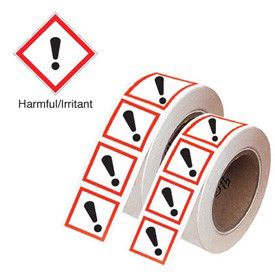
Harmful/Irritant - GHS Symbols On-a-Roll
From £47.99 To £324.99Supplied in: Roll of 250 -

Health Hazard - GHS Symbols On-a-Roll
From £47.99 To £324.99Supplied in: Roll of 250 -

Flammable - GHS Symbols On-a-Roll
From £47.99 To £324.99Supplied in: Roll of 250 -
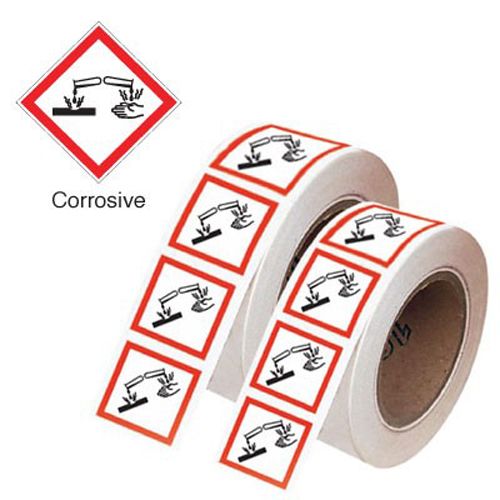
Corrosive - GHS Symbols On-a-Roll
From £47.99 To £324.99Supplied in: Roll of 250 -

Toxic - GHS Symbols On-a-Roll
From £47.99 To £324.99Supplied in: Roll of 250 -

Roll of 250 - 2011 ADR Limited Quantity Write On Labels
From £58.59 To £412.99Supplied in: Roll of 250 -

Dangerous for Environment - GHS Symbols On-a-Roll
From £47.99 To £324.99Supplied in: Roll of 250 -

Oxidising - GHS Symbols On-a-Roll
From £47.99 To £324.99Supplied in: Roll of 250 -

Compressed Gas & 2 - Easy Peel Hazard Warning Diamonds
From £4.99 To £15.99Supplied in: Single -

Flammable Liquid 3 - Hazard Warning Diamonds On-a-Roll
£64.99Supplied in: Roll of 310 -

Flammable Gas & 2 - Easy Peel Hazard Warning Diamonds
From £4.99 To £15.99Supplied in: Single -

Compressed Gas 2 - Hazard Warning Diamonds On-a-Roll
£64.99Supplied in: Roll of 310 -

GHS Symbols Square On-a-Sheet - Harmful/Irritant
From £9.99 To £13.99Supplied in: Pack of 4 labels -

Black and White & 9 - Hazard Warning Diamonds
From £2.49 To £6.99Supplied in: Single -

Flammable Liquid 3 - Hazard Warning Diamonds
From £2.49 To £15.99Supplied in: Single -

GHS Symbols On-a-Sheet - Dangerous for the Environment
From £9.99 To £13.99Supplied in: Pack of 4 labels -

GHS Symbols On-a-Sheet - Corrosive
From £9.99 To £13.99Supplied in: Pack of 4 labels -
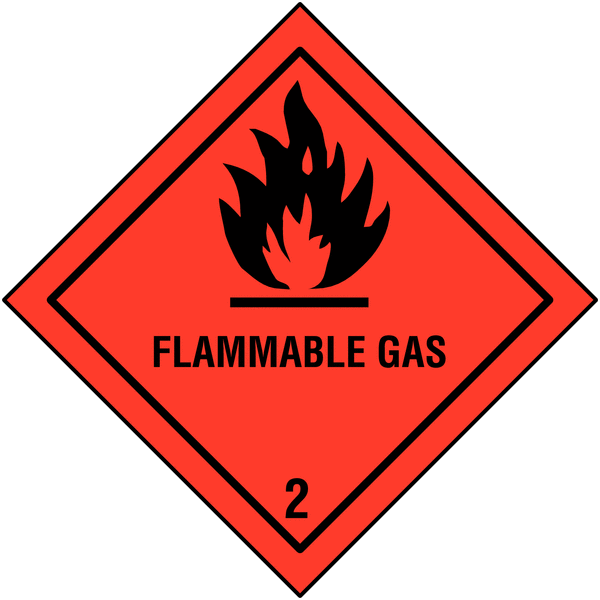
Flammable Gas & 2 - Hazard Warning Diamonds
From £2.49 To £6.99Supplied in: Single -

GHS Symbols On-a-Sheet - Health Hazard
From £9.99 To £13.99Supplied in: Pack of 4 labels -

Compressed Gas & 2 - Hazard Warning Diamonds
From £2.49 To £6.99Supplied in: Single -

Non-Flammable Compressed Gas Easy Peel Hazard Diamonds
From £4.99 To £15.99Supplied in: Single -

Compressed Gas - GHS Symbols On-a-Roll
From £47.99 To £324.99Supplied in: Roll of 250 -

Flammable 3 Symbol Only Hazard Warning Diamond Placards
£3.13Supplied in: Single -
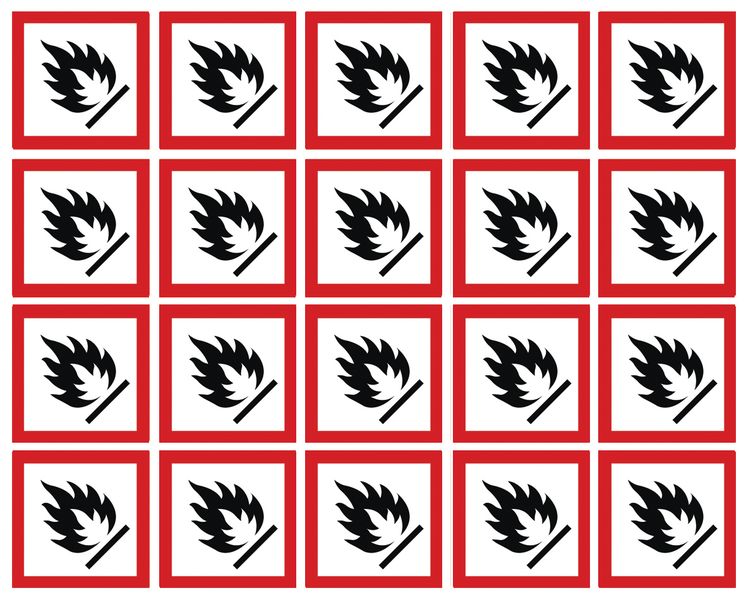
GHS Symbols On-a-Sheet - Flammable
From £9.99 To £13.99Supplied in: Sheet of 4 -

Corrosive - Hazard Warning Diamonds On-a-Roll
£64.99Supplied in: Roll of 310 -

Explosive - GHS Symbols On-a-Roll
From £47.99 To £324.99Supplied in: Roll of 250 -

Corrosive & 8 - Hazard Warning Diamonds
From £2.49 To £6.99Supplied in: Single -

Marine Pollutant Label
£5.39Supplied in: Single -

Toxic - Hazard Warning Diamonds On-a-Roll
£64.99Supplied in: Roll of 310 -
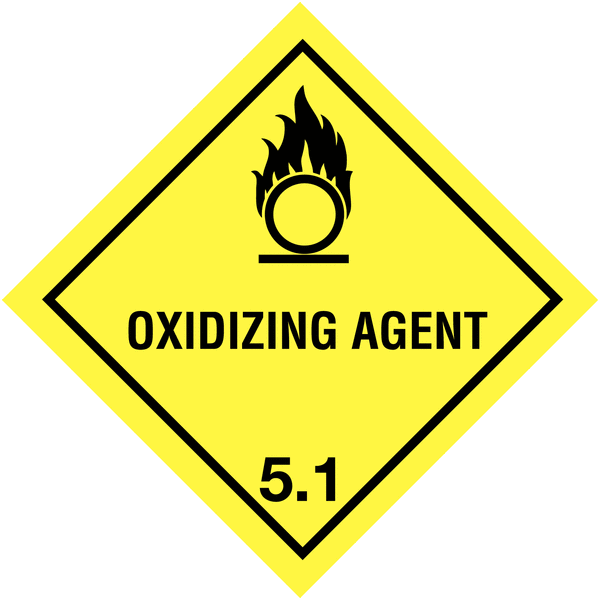
Oxidising Agent & 5.1 - Hazard Warning Diamonds
From £2.49 To £6.99Supplied in: Single -

GHS Symbols On-a-Sheet Self-adhesive - Toxic
From £9.99 To £13.99Supplied in: Sheet of 4 -

Flammable Liquid 3 Text/Symbol Hazard Diamond Placards
£7.99Supplied in: Single -

Limited Quantity Labels
£1.99Supplied in: Single -
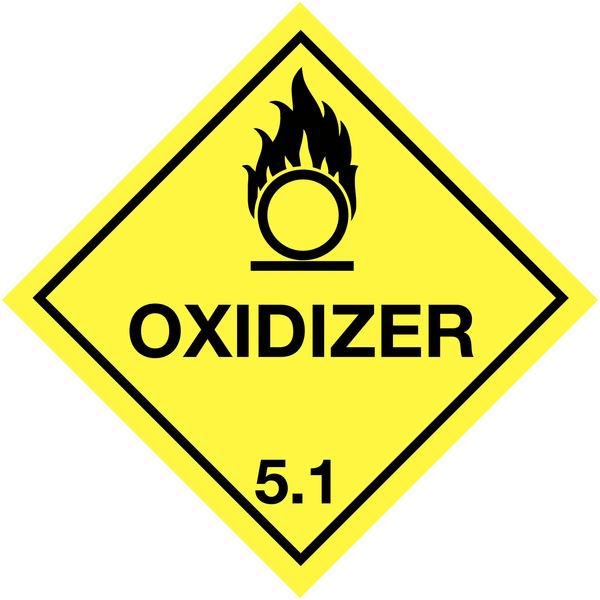
Oxidiser - Hazard Warning Diamonds On-a-Roll
£64.99Supplied in: Roll of 310 -

Non Flammable - Hazard Warning Diamonds On-a-Roll
£62.99Supplied in: Roll of 310 -

Non Flammable Compressed Gas/2 Hazard Warning Diamond
From £2.49 To £6.99Supplied in: Single -
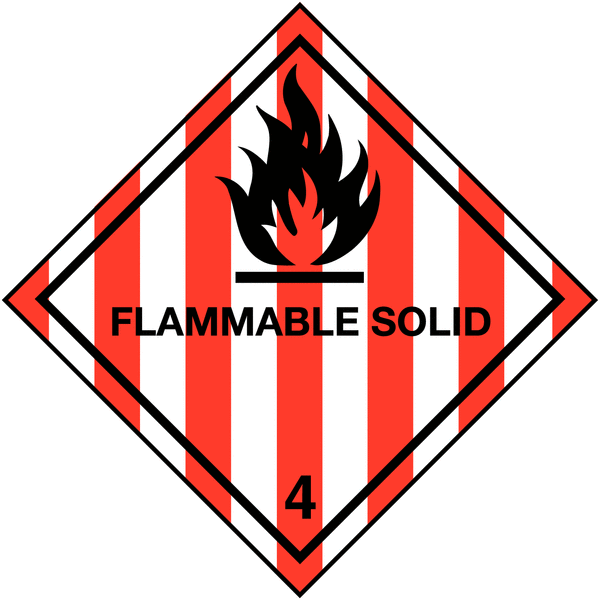
Flammable Solid 4 - Hazard Warning Diamonds On-a-Roll
£64.99Supplied in: Roll of 310 -

Misc Danger - Hazard Warning Diamonds On-a-Roll
£64.99Supplied in: Roll of 310 -

Oxidizer & 5.1 - Easy Peel Hazard Warning Diamonds
From £4.99 To £15.99Supplied in: Single -

GHS Supply Labels with Overlaminate
From £41.99 To £117.99Supplied in: Pack of 100 -

Flammable Solid & 4 - Easy Peel Hazard Warning Diamonds
From £4.99 To £15.99Supplied in: Single -

Corrosive & 8 (dark gloves) Easy Peel Hazard Diamonds
From £4.99 To £15.99Supplied in: Single -

Oxidising Agent & 5.1 Easy Peel Hazard Diamonds
From £4.99 To £15.99Supplied in: Single -

Toxic & 6 - Easy Peel Hazard Warning Diamonds
From £4.99 To £15.99Supplied in: Single -
New

Explosive 1 Easy Peel Hazard Diamonds
From £4.99 To £15.99Supplied in: Single -
New

Explosive 1.2C Easy Peel Hazard Diamonds
From £4.99 To £15.99Supplied in: Single -
New

Explosive 1.2C Vinyl Hazard Warning Diamonds
From £2.49 To £6.99Supplied in: Single -
New

Explosive 1.3G Easy Peel Hazard Diamonds
From £4.99 To £15.99Supplied in: Single -
New

Explosive 1.3G Vinyl Hazard Warning Diamonds
From £2.49 To £6.99Supplied in: Single -
New

Explosive 1.4G Easy Peel Blank Hazard Diamonds
From £4.99 To £15.99Supplied in: Single -
New

Explosive 1.4G Easy Peel Hazard Diamonds
From £4.99 To £15.99Supplied in: Single -
New

Explosive 1.4G Vinyl Hazard Warning Diamonds
From £2.49 To £6.99Supplied in: Single -

Radioactive 7 Text/Symbol Hazard Diamond Vinyl Placards
From £4.99 To £15.99Supplied in: Single -

Radioactive III Write On Hazard Diamond Vinyl Placards
From £4.99 To £7.99Supplied in: Single -

Miscellaneous Symbol Only Hazard Warning Diamond Placard
From £3.13 To £15.99Supplied in: Single -
New

Infectious Substance 6 Easy Peel Hazard Diamond
From £4.99 To £15.99Supplied in: Single -
New

Toxic Substance 6.1 Easy Peel Hazard Diamond
From £4.99 To £15.99Supplied in: Single -
New

Poison 6 Easy Peel Hazard Diamond
From £2.49 To £6.99Supplied in: Single -
New

Poison 6.1 Easy Peel Hazard Diamond
From £2.49 To £6.99Supplied in: Single -
New

Toxic 6.1 Easy Peel Hazard Diamond
From £2.49 To £6.99Supplied in: Single -
New

Flammable Liquid 3 Easy Peel Hazard Diamond
From £4.99 To £15.99Supplied in: Single -
New

Highly Flammable 3 Easy Peel Hazard Diamond
From £4.99 To £15.99Supplied in: Single -
New

Flammable 3 Easy Peel Hazard Diamond
From £4.99 To £15.99Supplied in: Single -
New

Highly Flammable 3 Self Adhesive Warning Diamond
From £2.49 To £6.99Supplied in: Single -
New

Organic Peroxide 5.2 Easy Peel Hazard Diamonds
From £4.99 To £15.99Supplied in: Single -
New

Oxidiser 5.2 Easy Peel Blank Hazard Diamonds
From £4.99 To £15.99Supplied in: Single -
New

Oxidiser 5.1 Easy Peel Blank Hazard Diamonds
From £4.99 To £15.99Supplied in: Single -
New

Oxidising 5 Easy Peel Hazard Diamonds
From £4.99 To £15.99Supplied in: Single -
New

Oxidiser 5.1 Vinyl Hazard Warning Diamonds
From £2.49 To £6.99Supplied in: Single -
New

Organic Peroxide 5.2 Vinyl Hazard Warning Diamonds
From £2.49 To £6.99Supplied in: Single -
New

Oxidiser 5.2 Vinyl Blank Hazard Warning Diamonds
From £2.49 To £6.99Supplied in: Single -
New

Oxidiser 5.1 Vinyl Hazard Blank Warning Diamonds
From £2.49 To £6.99Supplied in: Single -
New

Oxidiser 5 Vinyl Blank Hazard Warning Diamonds
From £2.49 To £6.99Supplied in: Single -
New

Organic Peroxide 5.2 Vinyl Multi-Colour Hazard Warning Diamonds
From £2.49 To £6.99Supplied in: Single -
New

Flammable Solid 4 Easy Peel Hazard Diamond
From £4.99 To £15.99Supplied in: Single -
New

Flammable Solid 4.1 Easy Peel Hazard Diamond
From £4.99 To £15.99Supplied in: Single -
New

Spontaneously Combustible 4 Easy Peel Hazard Diamond
From £4.99 To £15.99Supplied in: Single -
New

Spontaneously Combustible 4 Easy Peel Hazard Diamond Label
From £4.99 To £15.99Supplied in: Single -
New

Flammable Solid 4.2 Easy Peel Hazard Diamond
From £4.99 To £15.99Supplied in: Single -
New

Spontaneously Combustible 4.2 Easy Peel Hazard Diamond
From £4.99 To £15.99Supplied in: Single -
New

Dangerous When Wet 4 Easy Peel Hazard Diamond
From £4.99 To £15.99Supplied in: Single -
New

Class 4 - Dangerous When Wet Easy Peel Hazard Diamond
From £4.99 To £15.99Supplied in: Single -
New

Class 4.3 - Dangerous When Wet Easy Peel Hazard Diamond
From £4.99 To £15.99Supplied in: Single -
New

Dangerous When Wet 4.3 Easy Peel Hazard Diamond
From £4.99 To £15.99Supplied in: Single -
New

Flammable Solid 4.1 Vinyl Hazard Warning Diamond
From £2.49 To £6.99Supplied in: Single -
New

Spontaneously Combustible 4 Vinyl Hazard Warning Diamond
From £2.49 To £6.99Supplied in: Single -
New

Spontaneously Combustible 4.2 Vinyl Hazard Warning Diamond
From £2.49 To £6.99Supplied in: Single -
New

Spontaneously Combustible 4.2 Hazard Warning Diamond
From £2.49 To £6.99Supplied in: Single -
New

Dangerous When Wet 4.3 Vinyl Hazard Warning Diamond
From £2.49 To £6.99Supplied in: Single -
New

Dangerous When Wet 4 Vinyl Hazard Warning Diamond
From £2.49 To £6.99Supplied in: Single -
New

Flammable Gas 2.1 Easy Peel Hazard Diamonds
From £4.99 To £15.99Supplied in: Single -

Flammable Gas 2.1 Vinyl Hazard Warning Diamonds
From £2.49 To £6.99Supplied in: Single
GHS Labels
Get Internationally-Compliant Highly Rated GHS Labels
It is crucial to warn consumers and employees about harmful chemicals and materials. The United Nations (UN) developed internationally recognised symbols, warnings and pictograms known as the Globally Harmonised System (GHS) of Classification and Labelling Chemicals. Developers and manufacturers of chemical and dangerous substances must carry and apply these universal labels.
Seton’s health and safety experts sourced the highest-quality GHS labels. Our comprehensive selection covers all GHS requirements and elements so that you can comply with this essential international standard.
A single click takes you to the exact types of GHS labels you need. Choose from our value-approved range.

Expert Information
Also discover:
Asset labellingChemical LabelsElectrical LabelsFire Safety LabelsFirst Aid LabelsFood Safety LabelsMachinery Labels
Understanding the Globally Harmonised System (GHS)
Why do we have a Globally Harmonised System (GHS)?
It is important to identify or classify harmful properties and warn handlers and consumers of these inherent dangers. Labelling proves to be the most effective warning system. In the past, different countries employed their own labels. This led to significant confusion as the labels were not unified and often caused problems when it came to cross-border trade.The international community recognised the inherent issues of this global disparity and this led to standardisation and the introduction of the Globally Harmonised System of the classification and labelling of chemicals.
The Health and Safety Executive (HSE) describes it as a “single worldwide system” that classifies and communicates the harmful elements of industrial and consumer chemicals. This system aims to:
- Protect people and the environment
- Supply a recognised system to countries without any existing frameworks
- Reduce the need for animal testing
- Promote and streamline international trade
Here at Seton, we stock the widest selection of CLP pictograms and CLP hazard pictograms.
What are GHS labels?
GHS labels are the standardised warning symbols and pictograms developed for the Globally Harmonised System of the classifying and labelling of chemicals. The different labels in this system all carry the same depictions and warnings.As of 2016, more than 60 countries adopted this system. The GHS pictograms are the same worldwide – for example, a corrosive label or poison label.
Our team has considered the entire spectrum of chemicals used in all industries and made sure that we have every label for every market. Seton’s specialised GHS symbols include:
- Green warning diamond indicating non-flammable compressed gas. It is a self-adhesive label conforming to all road, air, sea and rail transport regulations. You can attach the versatile sign to packages, freight containers, tankers and vehicles.
- Black and white striped warning diamonds. These come in handy packs of nine and are easy to peel, even when wearing gloves.
How to read GHS labels
A label of hazardous chemicals must clearly relay a specific warning. The GHS chemical pictograms do just this by concisely depicting a danger or warning. GHS classification and labels can also contain:- A product identifier, which identifies the type of chemical. This can be a batch number or name or a unique code.
- A signal word is a single word to mark a specific chemical. These words can relay dangers, such as deadly poison, or warnings in the case of less severe chemicals.
Some additional information is dependent on the manufacturer or distributor. The GHS system has nine pictograms denoting dangerous substances. Some of Seton’s biggest sellers are:
- The corrosive pictogram diamonds on a roll. These are made from durable self-adhesive vinyl with a polypropylene overlaminate, making them hard-wearing. They comply with all transport regulations.
- ADR limited quantity labels. These black and white labels are highly visible and come in a roll of 250.
The Seton hazard labels UK comply with all the required quality and safety standards so that you can confidently label all your goods. Apart from specialised GHS labels, we also stock different varieties of a flammable pictogram, an X hazard symbol, and a toxic pictogram.
When are GHS labels required?
You need to affix GHS labels when working with or shipping any hazardous chemicals, whether in their pure or unrefined states or as part of a product. For example, you need to attach a health hazard pictogram label and poison label on goods that should not be inhaled or handled with bare hands.Do GHS labels have to be in colour?
The GHS pictograms are always in black and white. These can appear on different coloured backgrounds, such as red or green. The UK CLP pictograms are often in the shape of a diamond with a distinctive red border and white background.You may need more than one pictogram to label one chemical. Be sure to consider all the hazardous features of an element and label it accordingly. A single chemical may require an irritant label and a flammable liquid label. It is also necessary to mark compressed gas containers with an explosive label and an environmental hazard label.
What do GHS labels include?
GHS labels include all the possible warnings related to chemicals – for example, corrosive, flammable or toxic qualities. Each chemical element requires careful consideration to ensure that all the necessary labels are attached during storage and shipping.Seton has a label for every chemical and every situation. Look no further to find everything you need in CLP warning labels and CLP classifications.


